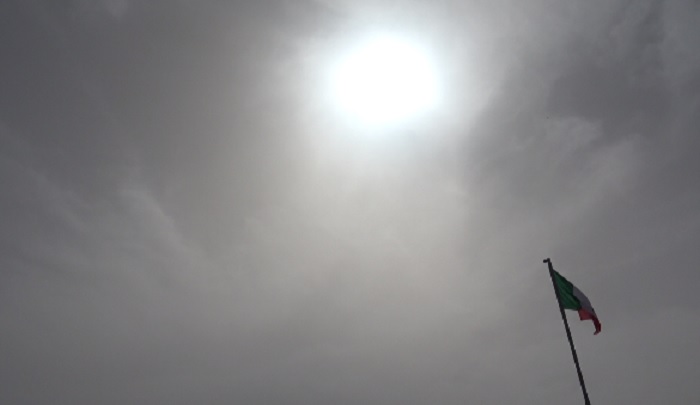PUBBLICATO DA ANTONELLA MICOLITTI 21/06/2024

Ormai è sempre più frequente la sabbia in sospensione o dal Sahara a causa dei cambiamenti climatici. In molti si chiedono se ci siano rischi per la salute, noi lo abbiamo chiesto alla dottoressa Laura Martino, responsabile Unità operativa semplice dipartimentale di Pneumologia dell’ospedale Annunziata di Chieti
“Non chiamatela sabbia”, ci dice la dottoressa, “piuttosto micro polveri che arrivano fino a noi non senza problemi per la salute”. In effetti il fenomeno di quella che comunamente viene detta “sabbia del Sahara”, non è raro e sta diventando sempre più frequente alle nostre latitudini a causa dei cambiamenti climatici. Cielo giallo, grigio, lattiginoso, insomma sembrano nuvole invece sono micro polveri. Come le PM10 che certo bene non fanno. Il fenomeno, spiega ancora la dottoressa, può portare irritazioni, asma, problemi respiratori, affaticamento. Dunque è bene prevenire ma questo non serve solo in tale occasione: “Evitare il fumo e tenere sotto controllo le eventuali malattie respiratorie”. Si può far uso anche alle mascherine là dove la concentrazione di polveri sottili è elevata.
Si stima che dal Sahara si sollevino ogni anno circa 180 milioni di tonnellate di polveri che vanno ad aggiungersi al PM2.5 e PM10, il pulviscolo già presente in atmosfera, con ripercussioni sul fronte della salute. Le categorie più a rischio sono bambini, anziani, cardiopatici e chi soffre di malattie respiratorie, a partire dall’asma. Uno studio pubblicato sulla rivista scientifica internazionale Occupational and Environmental Medicine ha accertato un aumento dei ricoveri ospedalieri per cause respiratorie in presenza di polveri sahariane nell’aria. Il consiglio alle persone a rischio è quello di evitarne il più possibile l’esposizione. Consolazione è che le previsioni meteo dicono che in questo fine settimana con probabili precipitazione la sabbia verrà spazzata via.
Fonte: Rete 8 Pescara, Abruzzo

Foto su gentile concessione di Alessio Brancaccio, tecnico ambientale Università degli Studi di L’Aquila
English translate
ABRUZZO: SAHARA SAND OR MICRODUST (FINE DUST), WHAT RISKS TO YOUR HEALTH?

Sand in suspension or from the Sahara is now increasingly common due to climate change. Many wonder if there are health risks, we asked Dr. Laura Martino, head of the simple departmental operational unit of Pneumology at the Chieti Annunziata hospital
“Don’t call it sand”, the doctor tells us, “rather micro dust that reaches us not without health problems”. In fact, the phenomenon of what is commonly called “Sahara sand” is not rare and is becoming increasingly frequent in our latitudes due to climate change. Yellow, grey, milky sky, in short they look like clouds but instead they are micro dust. Like the PM10s which certainly don’t do any good. The phenomenon, the doctor explains, can lead to irritation, asthma, respiratory problems and fatigue. Therefore it is good to prevent but this is not only useful on this occasion: “Avoid smoking and keep any respiratory diseases under control”. Masks can also be used where the concentration of fine dust is high.
It is estimated that around 180 million tonnes of dust rises from the Sahara every year, in addition to PM2.5 and PM10, the dust already present in the atmosphere, with repercussions on health. The categories most at risk are children, the elderly, heart patients and those suffering from respiratory diseases, starting from asthma. A study published in the international scientific journal Occupational and Environmental Medicine has found an increase in hospital admissions for respiratory causes in the presence of Saharan dust in the air. The advice to people at risk is to avoid exposure as much as possible. The consolation is that the weather forecast says that this weekend with probable precipitation the sand will be swept away.
Dott. Alessio Brancaccio, tecnico ambientale Università degli Studi di L’Aquila, membro della Fondazione Michele Scarponi Onlus, ideologo e membro del movimento ambientalista Ultima Generazione A22 Network per contrastare il Riscaldamento Globale indotto artificialmente dalla Geoingegneria Solare SRM
